[Report]
Five Trends Reveal The Emergence of Cloud-First Enterprises

INTRODUCTION
Cloud adoption is a major part of the IT agenda today. Infrastructure as a Service will grow at 23% per year, from $25 billion in 2016 to $72 billion in 2020. Enterprises are shifting to cloud infrastructure, for agility, growth, and cost reasons. While the cloud offers unique benefits like scalability and flexibility, IT leaders still have concerns around cloud security and compliance.
OpsRamp recently conducted a survey on the state of multi-cloud infrastructure adoption. We asked IT decision makers (working at organizations with 500+ employees) on how they were currently using cloud services.
Our survey shows how cloud infrastructure services are changing workload placement, IT spending, and sourcing strategies. The emergence of the ‘cloud-first enterprise’ implies a willingness to use cloud services for greater efficiency, innovation, and productivity. Learn how enterprises are embracing a cloud-first mindset (multi-cloud) to drive business transformation.
5 Cloud Adoption Stats That Explain The Emergence of Cloud-First Enterprises
Cloud-first thinking is finding more takers in the enterprise. Discover the five cloud adoption stats that are driving cloud-first mindsets.
LOSING DATACENTERS, GAINING CLOUD
Interesting, all the executives we polled were using some form of public cloud infrastructure. We found that 90% of organizations were using cloud services for at least a year. 7% of respondents have been using public cloud for more than seven years!
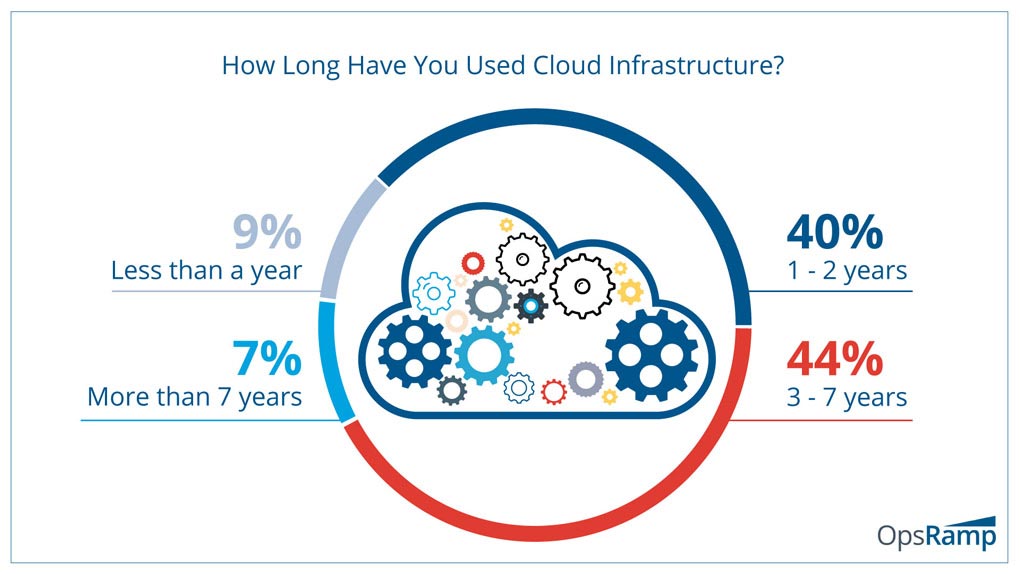
IT leaders continue to bet big on cloud infrastructure. 84% expect to move a greater proportion of workloads to the cloud in the next two years. Some enterprises are a bit more cautious – 16% expect to shift to cloud infrastructure over the next five years. The time horizon may differ, but public cloud is an unstoppable growth engine.
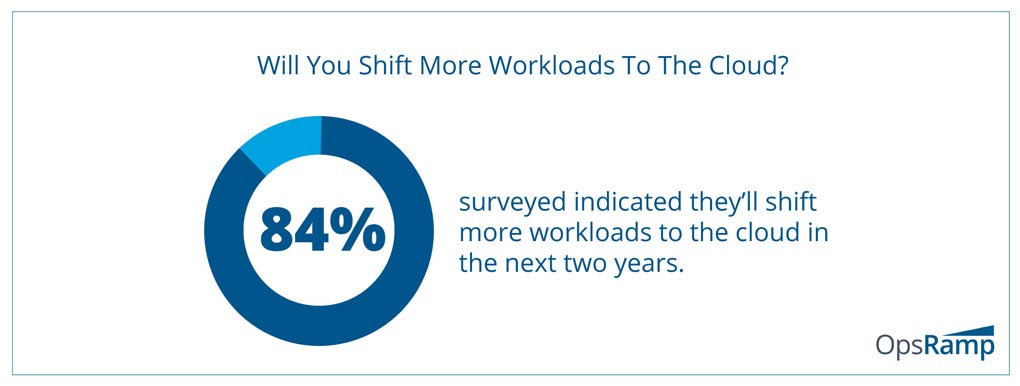
Enterprises are figuring out how to migrate, manage, and optimize cloud workloads. Most IT executives believe they’re just getting started with public cloud. We classified cloud infrastructure maturity into three stages, emerging, developing, and mature. 71% believe they are still at the emerging or developing stages of cloud maturity. Only 29% think their cloud practices have reached a state of maturity.
Embrace Cloud with Confidence
Bring Any Cloud You’ve Got.
We’ll Manage It For You.
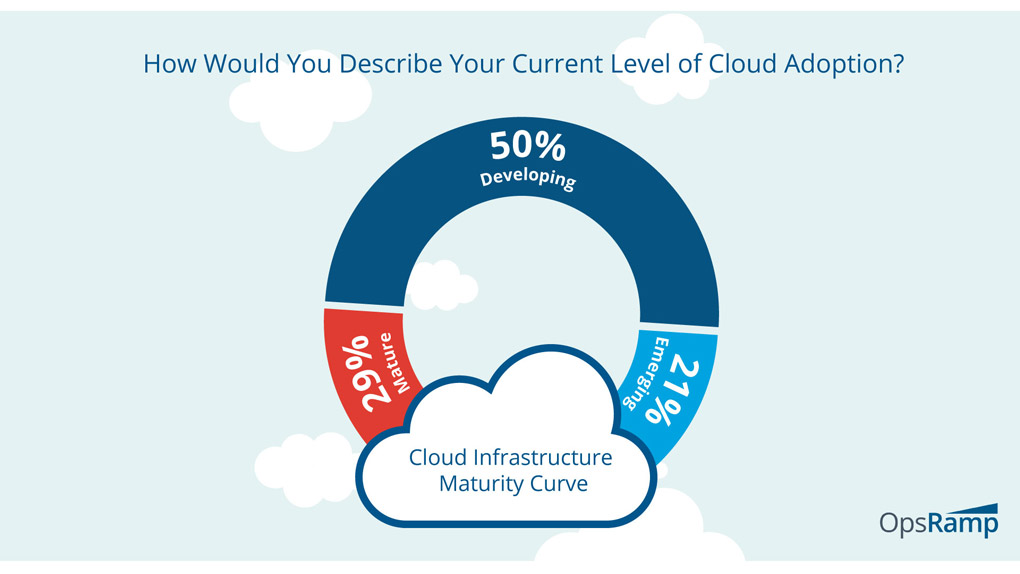
THE RISE OF CLOUD-NATIVE INFRASTRUCTURE
While dev and test workloads have long been a gateway drug to the cloud, it’s clear cloud is not just for staging anymore. Cloud infrastructure meets and exceeds enterprise demands for availability, reliability, speed, and cost. 40% of organizations are using cloud infrastructure for production environments. Other popular use cases include development and testing (32%) and disaster recovery (20%).
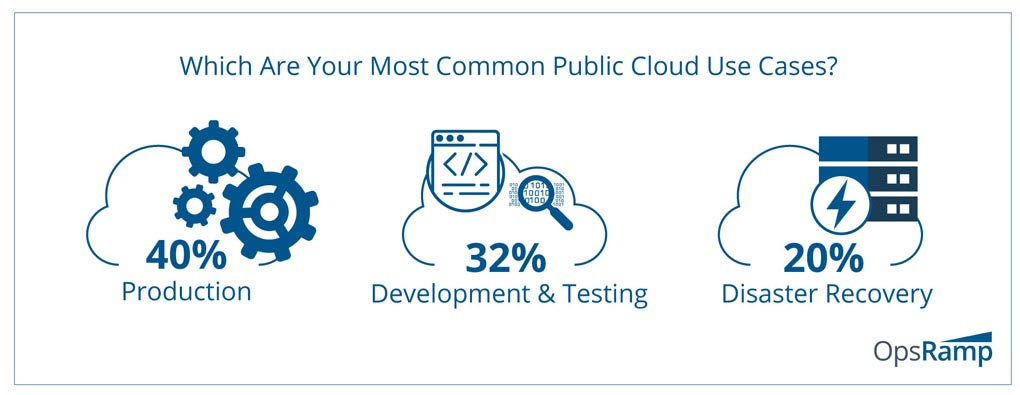
What explains the rise of cloud native infrastructure? The biggest benefit of public cloud is operational scalability and flexibility (62%). Cost is also a huge reason behind public cloud adoption. 47% like public cloud’s budgeting flexibility that lets them avoid large capital expenditures. 47% cite usage-based pricing models that enable infrastructure decisions based on business need.
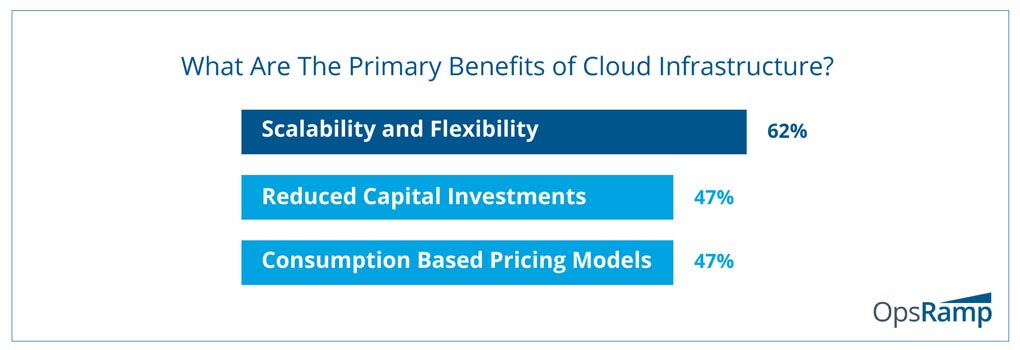
TECH BUDGETS GET CLOUDY
Public cloud services are grabbing a bigger share of IT budgets. 95% currently spend at least 10% of their IT budgets on public cloud. Around 60% currently spend more than 30% of their budgets on public cloud. In the next few years, over 80% expect to spend more than 30% on cloud infrastructure.
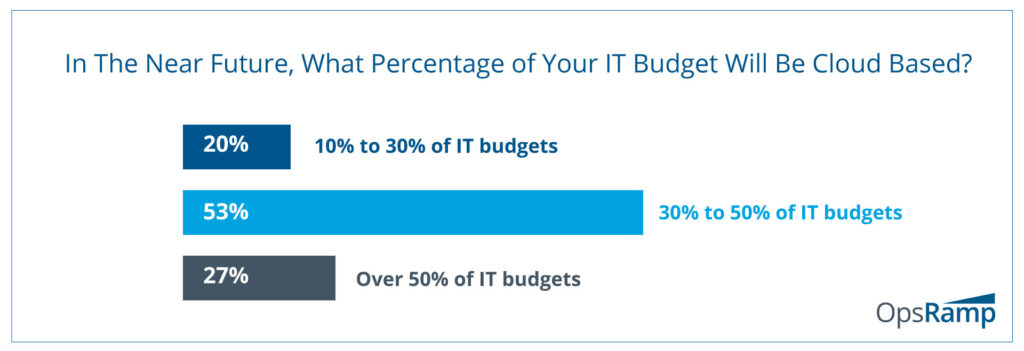
Cost savings are accelerating the enterprise cloud adoption curve. 94% expect to reduce infrastructure setup and maintenance costs with on-demand public clouds.
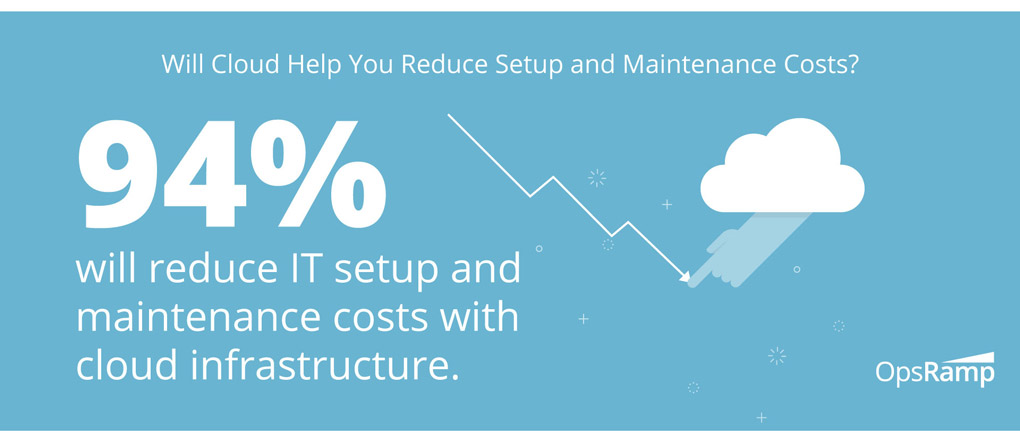
It’s not only about maintenance. Enterprises expect cloud infrastructure to deliver hard cost savings and reduce overall IT spending. By moving to the cloud, 90% expect to shave at least 10% of their IT budgets. 55% will bring down their IT budgets by at least 30% with cloud infrastructure services.
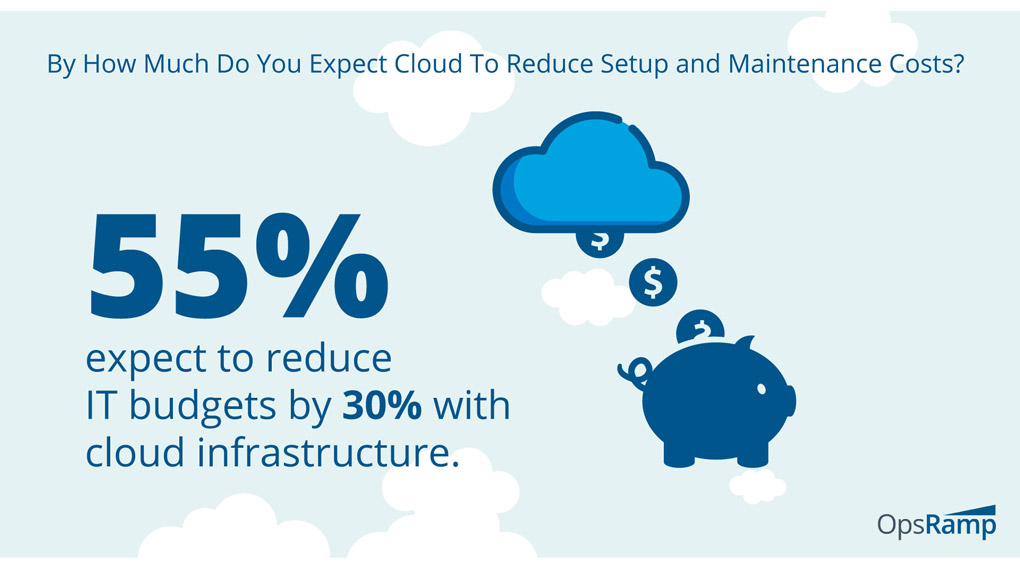
MULTI-CLOUD IS THE ORDER OF THE DAY
AWS is the undisputed market leader, with 34% of cloud infrastructure market share. Our survey, however, finds a slightly higher preference for Microsoft Azure over AWS. We also observe Google, IBM, and Oracle catching up fast in the cloud arms race.
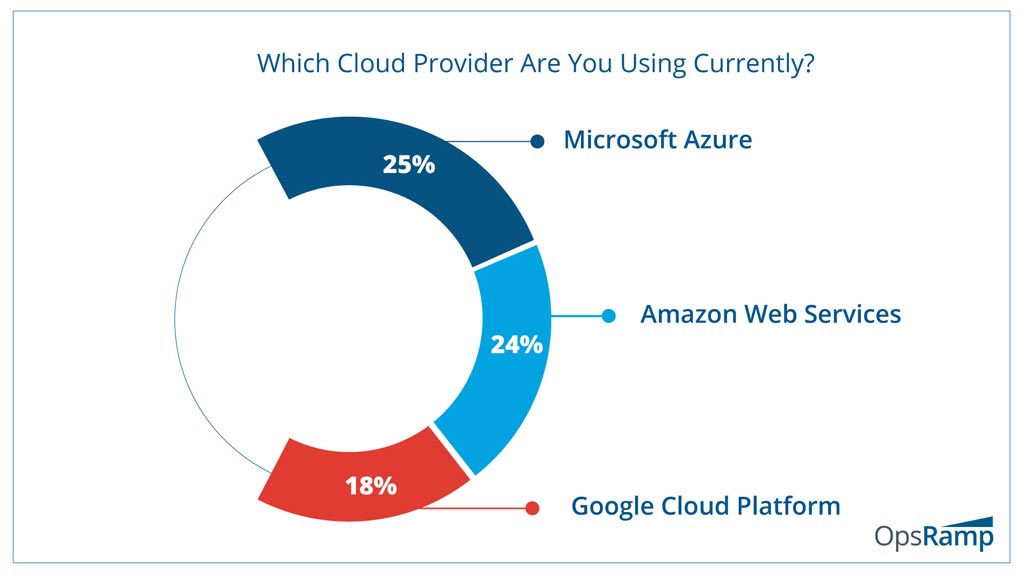
Organizations have a pragmatic approach to cloud sourcing. 75% expect to work with different cloud providers for their requirements. A big reason for multisourcing is the need to avoid cloud lock-in. Another is the ability to use specific providers for a use case (for example, Google Cloud for big data).
Discover, Scale, And Optimize Your Multi-Cloud Infrastructure With OpsRamp
Gain control of multi-cloud sprawl and drive real-time visibility for your hybrid infrastructure with OpsRamp.
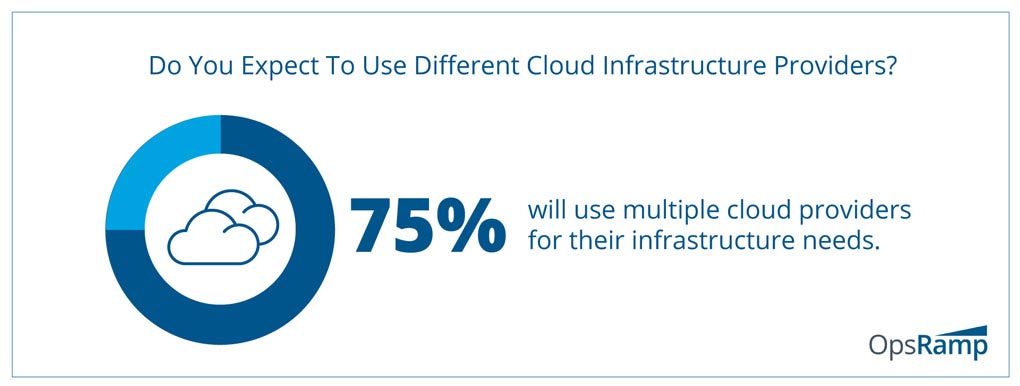
WHAT’S STOPPING CLOUD ADOPTION?
When it comes to cloud adoption, security (58%) continues to be the prime concern. Recent high profile incidents have brought increased awareness of cloud security practices. Enterprises also lack the right internal resources (19%) to manage cloud infrastructure. Cloud migrations (15%) continue to be a challenge and cloud providers will need to help customers smoothly transition to the cloud.
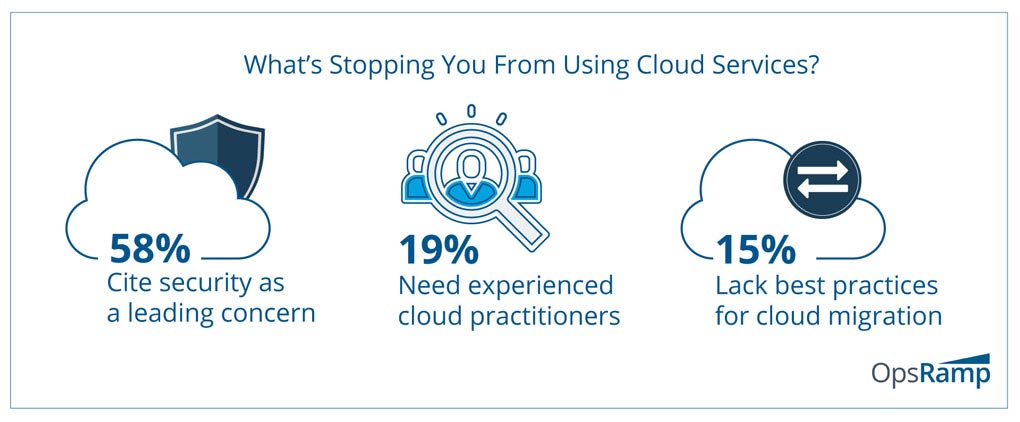
Managing the health, performance, and security of cloud workloads is no easy task. Maintaining confidentiality and integrity of cloud data is the top challenge for IT teams. The second biggest issue is keeping a tight lid on cloud spending. Finally, given how fast cloud providers are launching new solutions, keeping up with the latest cloud services is a Sisyphean undertaking.
What’s Slowing Down Enterprise Cloud Adoption? And, How Do You Fix It?
Understand the key issues holding back enterprise cloud adoption. Learn how to address cloud management challenges at scale.
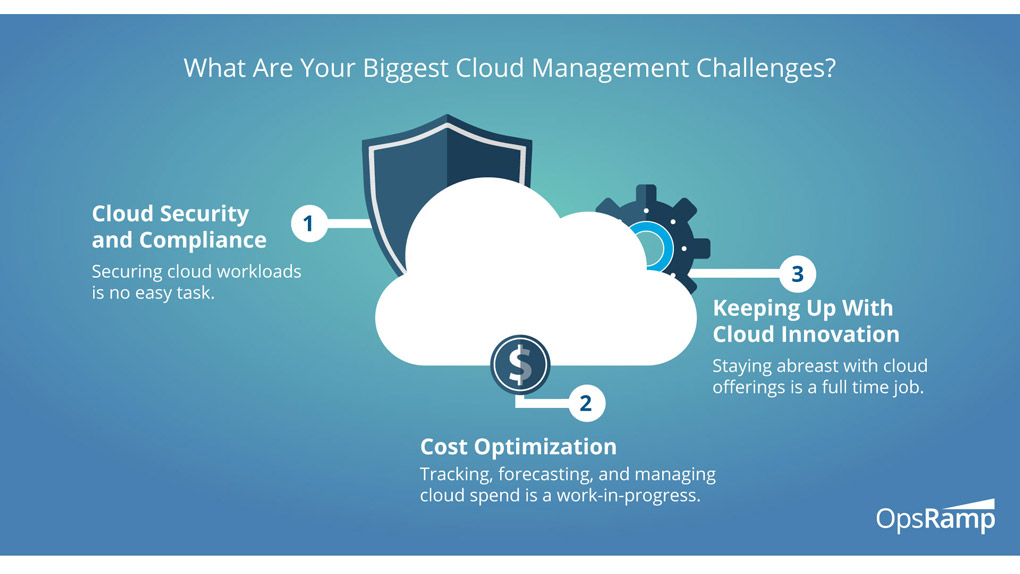
CONCLUSION
Can you assemble the right talent, resources, and competencies for a cloud-first mindset? A cloud-first strategy will transform your business outcomes with shorter time to market, faster customer feedback, and higher profitability.
It’s time to start your cloud-first journey today!
Methodology
- Sample Size. We surveyed 137 IT executives to assess the state of enterprise cloud adoption.
- Responsibility. Respondents are either individually or jointly responsible for cloud investment decisions.
- Geography. Survey respondents are all based in the United States.
- Firmographics. 29% worked at companies with 5,000+ employees, 40% worked at companies with 1,000 to 5,000 employees, and 31% at companies with 500 to 999 employees.